Innovative products and many years of experience
Today, video systems are an important component of the safety concept on cruise ships and other ships.
It isn’t rare to have well more than a thousand cameras on larger cruise ships. They serve completely different purposes. They can be installed in interior and exterior spaces, in passenger areas and in the engine room. They help the captain with ship navigation and contribute to passenger entertainment. As a result, the requirements differ for all the cameras, sometimes greatly. In any case, there is no such thing as a “ship’s camera”. One aim of the video systems is to document incidents and accidents so as to be ready for any potential liability claims. There may be greater or lesser requirements when it comes to covering the ship with video technology depending on the operating region and the nationality of the passengers.
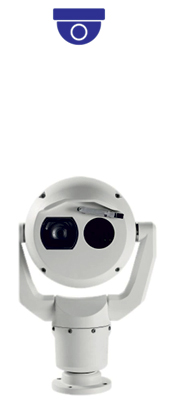
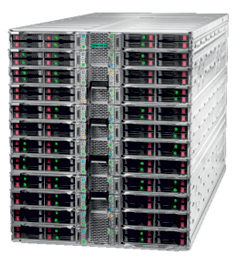
As in comparable facilities on land, such as airports, shopping centres and hotels, there are similar safety and security requirements on cruise ships. Aside from the classic aims of video technology – protecting against crime – there is an increasing focus on organisational aims. Optimising staff placement to create as comfortable an environment as possible for the passengers is an essential aim. Queues should be avoided, and a helping hand should always be available if needed. Video technology also helps with this.
Wide range of possible applications
There are numerous areas of application for video systems.
Casinos, a hotspot for video technology:There are particularly high picture quality requirements for video recordings in casinos. Quick movements from dealers and guests mean cameras with a higher frame rate are needed. The image resolution needs to be so high that the details on chips can be clearly distinguished. In the event of complaints, it must be possible to find images quickly. With resolutions of up to 12 megapixels and frame rates of 60 fps, this isn’t a problem.
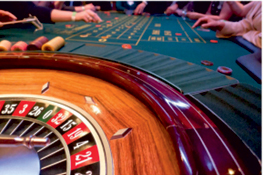
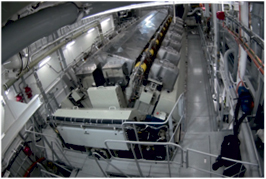
Different conditions apply here. The lighting is lower, the temperature can be very high, and a camera could be quickly damaged when handling tools. This requires cameras which have been specially developed for low light conditions, which are available in impact-resistant housing and which can withstand ambient temperatures above 50°C. The latest camera technology is also used here, making it possible for alarms to be sounded early in the event of a fire or if smoke is produced – quicker than any conventional fire alarm.
Outdoors, camera are needed which are excellently protected against wind and weather. An important function on passenger ships is man-over-board detection. For this purpose, thermal cameras are used which can detect people in any light and weather conditions and warn safety personnel via built-in video analysis.
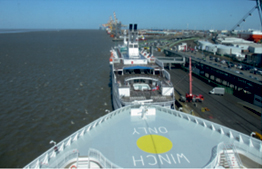
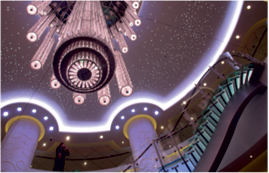
In typical indoor areas, the most important thing is that the design does not sacrifice safety. This is why mostly 360° cameras are used, which can be integrated into the ceilings and wall coverings almost invisibly. With up to 12 megapixel resolution and a fisheye lens, the entire room is covered. The camera itself is able to rectify the fisheye image in such a way that the observer can be given a straight-angled image without any distortions. This means blind spots are no longer possible and an incident can be traced seamlessly.
Even ship navigation is supported by cameras that make it possible to safely navigate a ship into a harbour and through locks. There are always areas that cannot be monitored from the ship’s yardarm. Video technology can display these areas on special monitors at the push of a button. The display can be largely automated via open interfaces to other ship systems. The interfaces to ship management, the fire alarm system, entertainment and entry control ultimately make the cruise ship networked. But video data represents highly personal data, which certainly needs to be protected against abuse.
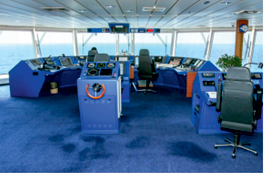
Video Management Systeme VMS
If there is a large number of cameras, managing the live and recorded video streams is a key challenge.
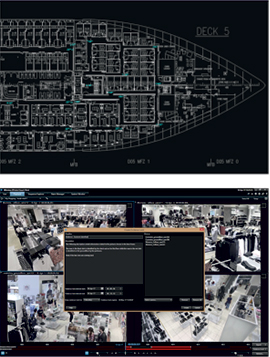
Using deck plans and a logical structure, the video management system makes it possible to operate thousands of cameras intuitively. Automatic notification in the event of incidents and alarms supports the staff and makes effective operation possible in the first place. Intelligent video analysis can identify whether a person has fallen over or is in a place they are not authorised to be, or simply whether queues are forming, and more staff need to be deployed. By using intelligent video analysis that describes the content of video footage, it is possible to search for incidents quickly and easily.
The recording of videos can be done centrally, distributed across network nodes, and even redundantly. This way, all the operator’s availability requirements can be met.
No matter what your requirements, we’ll work out the optimal concept for you.



